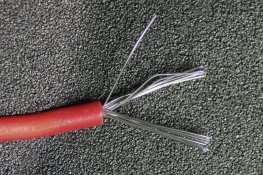This is not quite a like for like but it is head for head and a comparison of two 100cnt strings
Parameters
For the record we capture the LED current and the Pixel current as two separate numbers
All current numbers unless stated are for 100% white.
12v Pixels
So first measurement was to check current when just powered up and when blacked out.
This is known as the quiescent current.... and gives the power used when the lights are powered up and doing nothing
So lets draw that out to a 2000 pixel megatree with 20 x 100cnt strings
At 5v
0.08 x 20 = 1.6A x5v = 8W
at 12v
.28 x 20 = 5.6A = 67W
So what Current do we see for 100 pixels at 100%
So we see less current on the wires which helps with voltage drop meaning we do have longer runs between injection points
BUT
we also see 63% greater power consumption for the same number of pixels
Lets again use the 2000 pixel megatree with 20 x 100 cnt strings
12v
20 x 34w = 680w.
5v
20 x 21w = 420w
Now a couple of observations
View: https://vimeo.com/670152673
Open to questions and further test requests
Cheers
Phil
Parameters
For the record we capture the LED current and the Pixel current as two separate numbers
All current numbers unless stated are for 100% white.
12v Pixels
- Unregulated, resistive bullet pixels
- 20CWG wiring
- 2811 protocol
- these were a simple purchase of pixels from a pixel supplier from China
- testing revealed these are 27mA per LED
- 29.8mA per pixel
- 2811 based square nodes
- 18CWG wiring
- These came from Ray Wu in Nov
- testing had 47mA per LED
- 47.8mA per pixel
So first measurement was to check current when just powered up and when blacked out.
This is known as the quiescent current.... and gives the power used when the lights are powered up and doing nothing
| 5V | 12V | |
| Quiescent | 70mA | 200mA |
| Black out | 80mA | 280mA |
So lets draw that out to a 2000 pixel megatree with 20 x 100cnt strings
At 5v
0.08 x 20 = 1.6A x5v = 8W
at 12v
.28 x 20 = 5.6A = 67W
So what Current do we see for 100 pixels at 100%
| 5v | 12v | |
| Amps - 100 cnt draw - 100% | 4.24 | 2.87 |
| Power in watts | 21.2 | 34.44 |
So we see less current on the wires which helps with voltage drop meaning we do have longer runs between injection points
BUT
we also see 63% greater power consumption for the same number of pixels
Lets again use the 2000 pixel megatree with 20 x 100 cnt strings
12v
20 x 34w = 680w.
5v
20 x 21w = 420w
Now a couple of observations
- The 12v resistive pixels got warmer but not where you may suspect, see the thermal image below but it appears to be the LED itself
- Using a light meter the 5v pixels were brighter at the same % level
- Reducing the light reading on the 5v pixel to match the the 12v pixel seen the 100cnt current drop to 3.2 Amps and the drive % to 73%
- This would see the power required for the tree drop to 306w
- This actually fits with an old statement that 12v pixels need twice the power
View: https://vimeo.com/670152673
Open to questions and further test requests
Cheers
Phil


